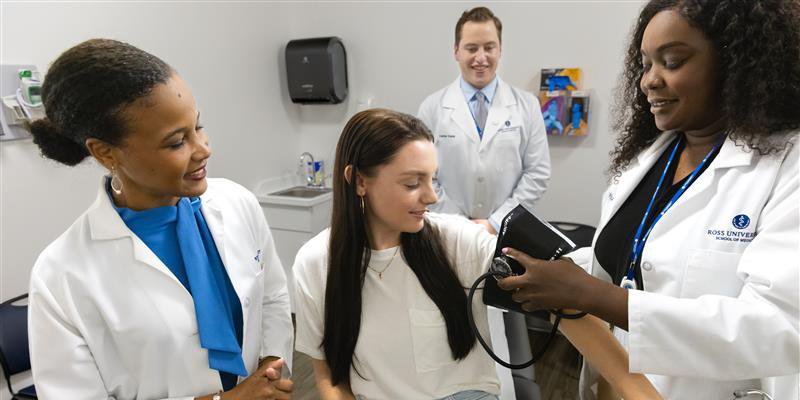Imagine you’re a physician and you’re about to deliver difficult news to a waiting family or you’re a social worker about to counsel a person facing a tough situation. These types of conversations are always hard, gut-wrenching emotionally and high-risk where the consequences of a misstep can be irreparable. Even if you’ve studied, rehearsed and practiced those talks - either in your head or in the classroom - when they arise in real life, it can be difficult to exercise real, empathetic interaction.
In online programs, students would traditionally practice these scenarios in one of three ways; practicing 1-on-1 with another person synchronously by video or in-person, responding to multiple-choice questions on interactive case studies, or recording themselves reading a prompt and sending in the video for review. While these methods can be effective, scheduling time to practice with another person can be difficult, multiple-choice questions don’t account for human deviation or variation in live conversation and recording oneself in front of the anonymous “red recording light” seems impersonal and delays feedback.
At Walden University, we’re partnering with Soul Machines to pilot a digital human named “Linda” to our counseling students. Linda, who simulates a domestic abuse therapy patient, utilizes AI-powered empathetic technology that senses facial expressions, tone, and the use of language, then responds to the student accordingly. Linda allows our counseling students to practice these tough scenarios in a safe environment, repetitively, while retaining the human touch. While many of the early digital humans were built for customer service purposes, we worked with Soul Machines to up the emotional IQ of digital humans that could express a broader, more difficult range of emotions and reactions. Partnering our faculty and technology teams with the Soul Machines product team, we evolved digital humans to these new possibilities around patient counseling and social work.
There is a distinct advantage to using digital humans in these scenarios. First and foremost, digital people don’t just talk; they see, hear and have a digital brain that helps them listen, empathize and engage personally. Processing both the verbal and non-verbal cues of the participant, digital humans have a distinct advantage over chatbot-based or other voice-based simulations.
Second, digital humans provide two-way real-time engagement, delivering a more realistic and richer experience. In the “Linda” experience, we provide real-time feedback as the conversation goes on, so the student can course correct or learn while the conversation is in-flight. Third, our students are busy professionals, so Linda provides the flexibility for students to practice on their own time and repeat as many times as necessary to help improve their skills.
While our use case for empathetic tech is relatively novel, digital humans are already being used in the medical and healthcare industry. They’re currently being used as digital assistants, helping patients answer questions about their health, assisting with the intake process, educating patients about preventative care and more. The implications of this touch all aspects of both mental and physical health. We are already exploring potential applications at Adtalem Global Education’s other medical and nursing schools to simulate a multitude of scenarios for our medical and nursing students. They can be used to train counselors, social workers, and psychologists to respond to emotional trauma or also be used to help with diversity, equity and inclusion training by giving students experience interacting with patients of different ages, races or ethnicities.
As we continue to test this technology and deliver better virtual experiences to our students, I’m excited to see how this pilot will impact our students’ ability to empathize and react to tough situations. Utilizing empathetic tech and digital humans in such a way helps us to empower a new generation of learners and stay true to Walden’s core mission to provide “Education for Good.”




